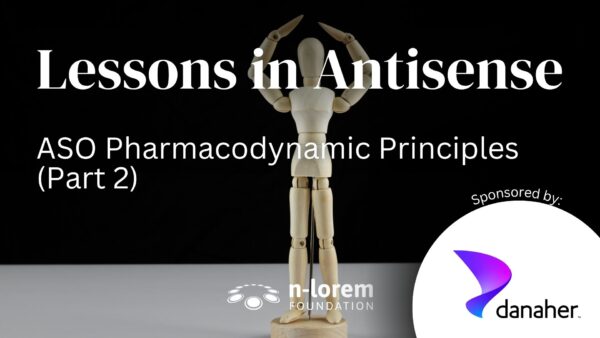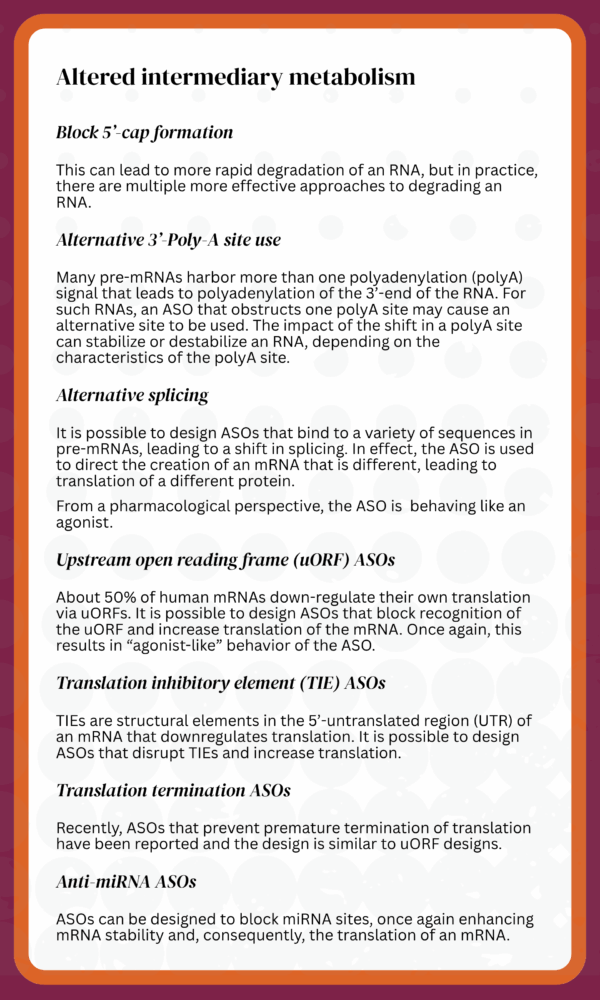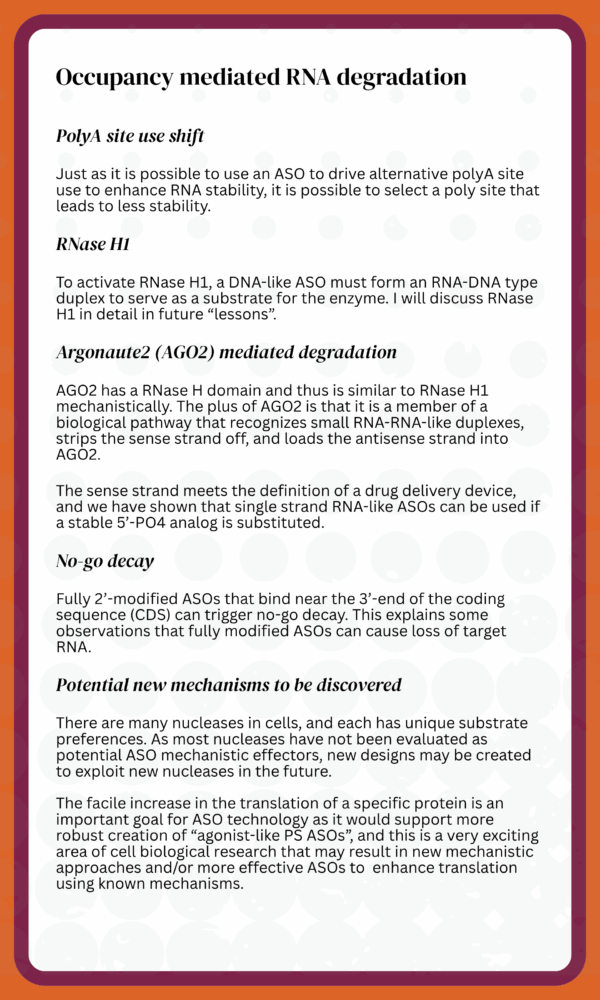Lessons in Antisense
Lesson 9 – ASO Pharmacodynamic Principles (Part 2)
June 16, 2025 by Dr. Stan Crooke

ASO post-receptor binding mechanisms differ from those for protein-based receptors.
Introduction
A critical first step in the evolution of ASO technology was the development of a theoretical framework within which to rationalize pharmacological observations. As receptor theory is the foundation on which the discipline of pharmacology rests, it made sense to adapt traditional receptor theory to rationalize the unique characteristics of ASOs. To do that, two concepts were essential. First, consider RNAs as a series of potential receptors for ASOs. Since ASOs are usually 18-20 nucleotides in length, a pre-mRNA or mRNA could be considered to have millions of potential receptor sites. Second, to consider ASOs as agents that alter the intermediary metabolism of RNA.
In most cases when a small molecule, peptide, or monoclonal antibody (mAb) interacts with a receptor, the receptor exists because it has a cognate biological agonist, e.g. dopamine binding to dopamine receptors. The receptor is designed to activate a signal transduction process when its natural agonist binds. Thus, when an exogenous agonist is added, the fraction of receptors coupled fully to the signal transduction process is increased. Exogenous antagonists simply prevent the natural agonist from coupling the receptor to the signaling process. Binding of drugs to traditional receptors is extremely rapid and the signal transduction process is also quite rapid.
In contrast, when an antisense oligonucleotide (ASO) binds to its cognate sequence, there is no natural agonist, and the receptor (cognate sequence) for the ASO is not directly coupled to a biological response. Rather, the ASO either causes more rapid degradation of the RNA via some cellular process, alters the metabolic path of the RNA, or interferes with a specific function of the target RNA. Hence, the effects of an ASO on cellular functions tend to be much slower developing than is typically observed with drugs interacting with traditional receptors.
Occupancy only mediated mechanisms
To initiate any antisense mediated mechanism, the ASO must bind to its cognate sequence in RNA.
Occupancy of a cognate site by an ASO can alter either the intermediary metabolism (processing) of the RNA or alter some function of the RNA.
To avoid risk of target RNA reduction due to creating a substrate that could be subject to RNase degradation, the PS ASO must be fully modified at all 2’-positions to avoid degrading the target RNA.


Conclusions
Over the decade, we have learned how to design ASOs to take advantage of a variety of post-RNA binding pharmacodynamic mechanisms. Importantly, all true antisense effects begin with binding of the ASO to its cognate sequence (receptor) in the target RNA. The mechanistic versatility of ASOs is an important attribute that enhances the breadth of applicability of the technology.
We continue to seek to broaden the utility of ASO technology by learning to design ASOs to take advantage of a variety of post-RNA binding mechanisms. As about 40% of drugs that are marketed are agonists, a major goal is to enhance the designs of agonist-like ASOs. Fortunately, progress in understanding RNA biology and biochemistry is fueling ever more sophisticated approaches to agonist-like ASO design, and n-Lorem is in the forefront of these efforts.

We cannot do
this alone
Together we are changing the world—
one patient at a time
We hope that you join us on this journey to discover, develop and provide individualized antisense medicines for free for life for nano-rare patients. The ultimate personalized medicine approach – for free, for life.
Follow us on social for updates on our latest efforts


